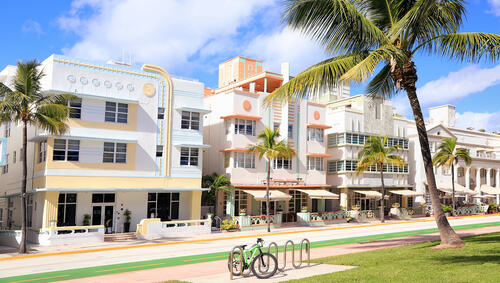From Adobe to Art Deco, the sheer variety of architectural styles in the U.S. is jaw-droppingly impressive. All over the country, the creativity and techniques demonstrated prove that beauty and function often go hand in hand, whether buildings are grouped together in a historic district or singled out as a lone yet spectacular landmark. Whether you want to stroll through antique structures or marvel at modern wonders, here are our picks for the best destinations in the U.S. for architecture lovers.
Chicago, Illinois
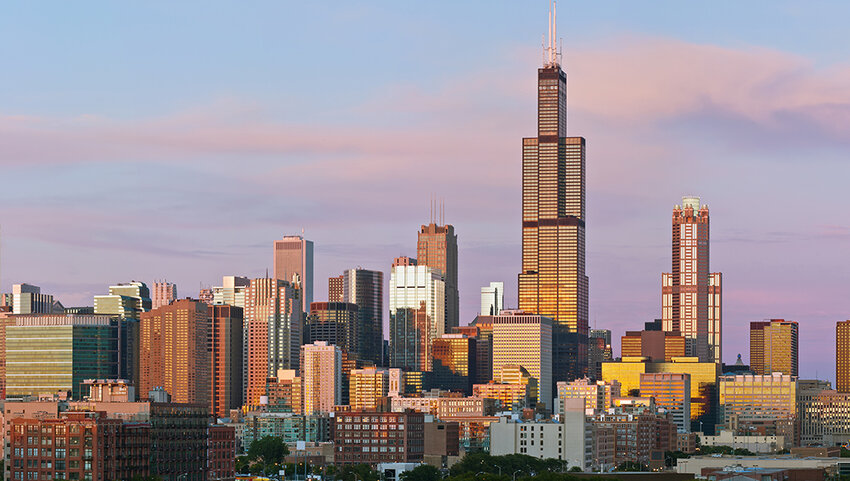
Chicago is hailed as the birthplace of the skyscraper. By the end of the 19th century, it had become one of America’s best connected cities thanks to the canals linking the Great Lakes to the Mississippi and a dense network of railroads. The city’s population expanded rapidly, while manufacturing, banking, and commerce flourished. Advances in building technology and the invention of the elevator meant that it was at last possible to build upwards instead of just outwards. The world’s first skyscraper, the 10-story Home Life Insurance building, topped out in 1884. Many others, ever taller, followed, until in 1974, the city proudly announced the completion of the Sears Tower (now Willis Tower), the tallest building in the world until the late 1990s. Today, visitors can learn all about Chicago’s love affair with the skyscraper on architecture-themed boat and walking tours.
Santa Fe, New Mexico
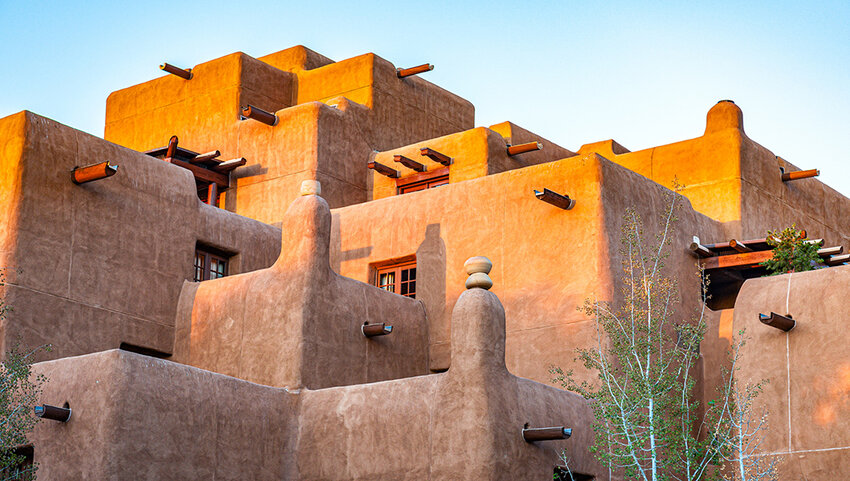
Santa Fe is known for its unique Spanish Pueblo architecture. In New Mexico, indigenous Puebloans typically created rooms around a central courtyard. The flat roofs used in their construction were supported by wooden posts called vigas and latillas. Builders added layers of adobe (a mixture of earth and straw) on top of this rudimentary structure by hand. When the Spanish settled here in the 16th century, they adapted this method, using wooden molds to make adobe bricks but retaining the buildings’ rounded corners and smooth outer layer. Today, what we know as Spanish Pueblo style remains faithful to some of those early traditions and incorporates other design features, such as kiva fireplaces and nichos (small arches built into walls to display décor pieces). To explore these Spanish Pueblo buildings for yourself, book a stay at the characterful La Fonda on the Plaza, built a century ago on the site of a much earlier inn. Within walking distance, you’ll find plenty of other historic adobe constructions, including the 17th-century Palace of the Governors, San Miguel Chapel, and the oldest house in the city, now a gift shop.
Palm Springs, California
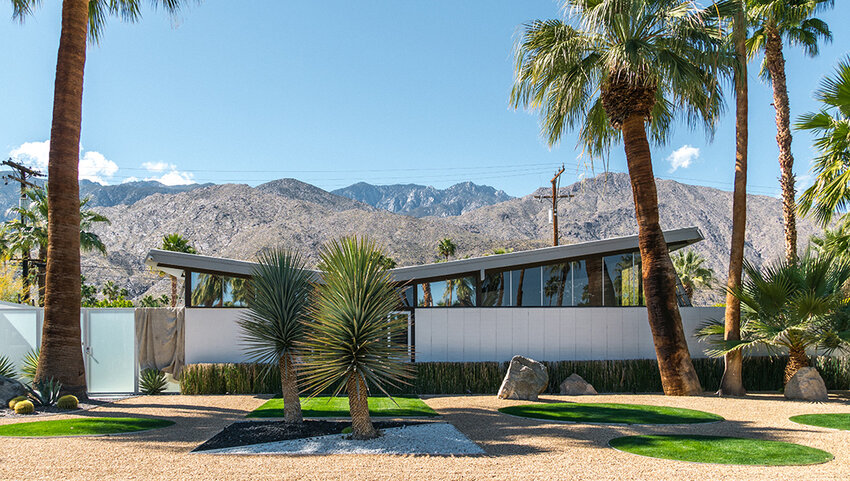
Palm Springs boasts a high concentration of mid-century modern architecture. These buildings were designed with the desert climate in mind, blurring the lines between indoor and outdoor spaces. This principle underpins what became known as Desert Modernism, a minimalist style where simplicity and clean lines dominate. It is exemplified by design details such as glass sliders, floor-to-ceiling windows, open-concept living spaces, and patterned breezeblock walls that keep the sun out while still allowing air to circulate. You won’t see steeply pitched roofs – they tend to be flat or gently sloping, as exemplified by the butterfly style. It’s worth taking a closer look at some of the city’s most iconic buildings. Start at the Palm Springs Art Museum Architecture and Design Center before moving on to the Palm Springs City Hall. The Kaufmann Desert House and the Elvis Presley Honeymoon Hideaway are also noteworthy, though you can only view their exteriors. Meanwhile, Frank Sinatra’s Twin Palms Estate offers private tours for groups.
New Orleans, Louisiana

When you think about the architecture in New Orleans, chances are you’ll envision the wrought iron balconies of the French Quarter or the grandiose mansions of the Garden District. Less well-known, however, are the city’s whimsical steamboat houses. You’ll find a pair of properties (one dating from 1905 and the other from 1913) in the Holy Cross Neighbourhood of the Lower Ninth Ward. They were heavily inspired by the steamboats on the Mississippi – their builder, Milton P. Doullut, was a riverboat pilot – and their ornate exteriors are both pretty and well-preserved. That’s in part due to the fact that the Doullut family were savvy builders, choosing higher ground for both houses in the event of a natural disaster. They also covered the whole of the ground floor with ceramic tiles so that they could be hosed out in the event of flooding. While you can’t tour inside, the outside is worth a look.
Miami, Florida
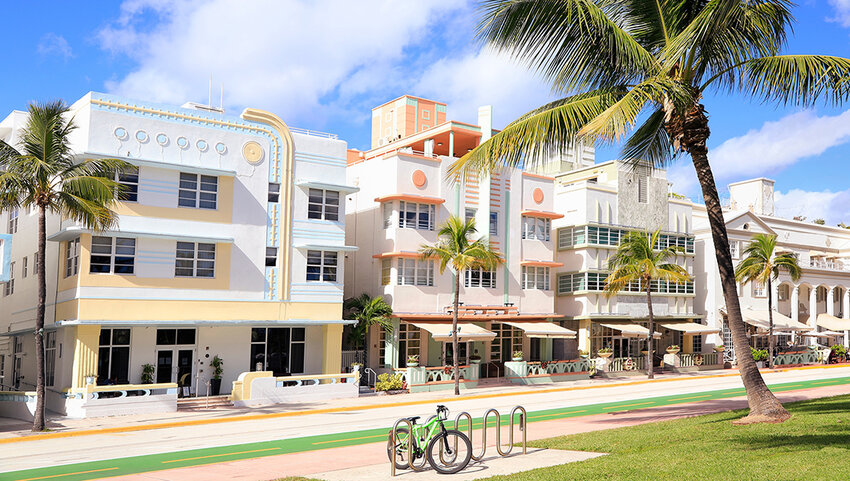
Miami’s Art Deco Historic District runs parallel to the beach, covering a large section of Ocean Drive, Collins Avenue, and Washington Avenue. It contains the largest concentration of Art Deco buildings in the U.S., boasting more than 800 constructed between 1923 and 1943. Most of them follow the conventions of the Streamline Moderne style, a pared back form of Art Deco. But here in Miami, close to the ocean and basking in sub-tropical heat, this style has evolved. Bright, colorful façades encapsulate the fun and glamor of the district in a style often referred to as Tropical Deco. Look closely and there are other nods to the location, such as the portholes and floral motifs that decorate rendered walls. While anyone can appreciate the exteriors of these buildings, book a stay in a hotel, such as the Colony, Clevelander, or the Plymouth, for a more immersive experience.
Philadelphia, Pennsylvania
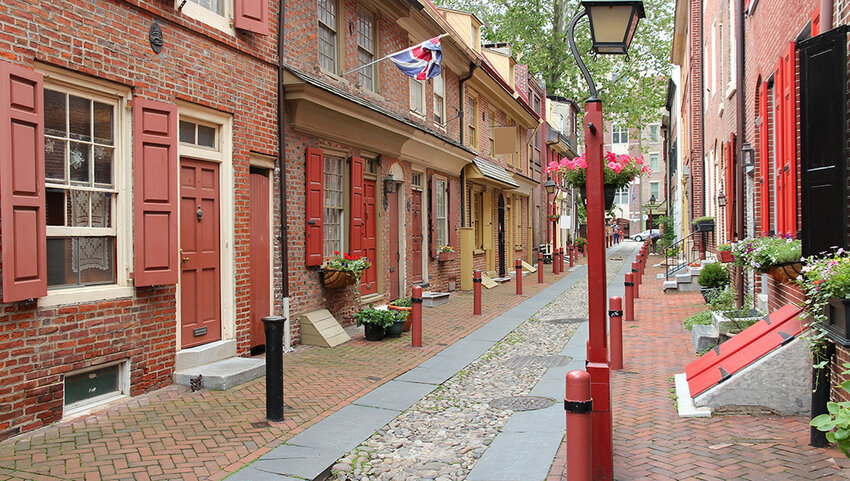
Brick row houses are synonymous with Philadelphia. Ideally suited to a gridiron street pattern, they could be densely packed onto narrow lots, yet easily scaled up to create much grander townhouses. Today, some of the city’s oldest surviving brick row houses are on Elfreth’s Alley. Constructed between 1728 and 1836, the homes on this cobblestone street are good examples of Federal and Georgian architecture, built for tradesmen such as silversmiths, dressmakers, glassblowers, and furniture makers. The street’s state of preservation is largely thanks to the establishment of the Elfreth’s Alley Association, which was founded in 1934 to save the street from demolition. To explore more about the history of brick row houses in Philadelphia, tourists can visit the Elfreth’s Alley Museum. Housed in two row houses, it’s furnished to show what life would have been like here in the 18th century.
New York, New York
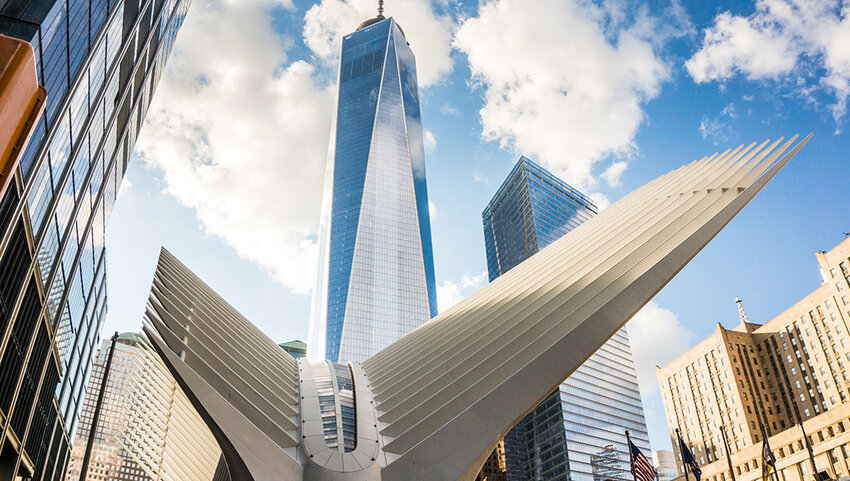
It seems fitting, given the variety of architectural styles you’ll find in this city, that New York should round off this list. Brooklyn’s brownstones, the Brutalist Breuer Building of the Upper East Side, the Beaux Arts elegance of Grand Central Terminal, New York Public Library — the sheer diversity of the buildings that line NYC’s streets and avenues is mind-blowing. The city is constantly evolving, but keeps an open mind to architecture. While brand new glass and steel high rises pierce the sky in Midtown, classic buildings like the Empire State and the Chrysler Building are cherished fondly, creating a city that seamlessly melds the old and the new. Sometimes, however, forced change results in striking replacements, such as the Oculus at the World Trade Center. Elsewhere, industrial remnants are reimagined: Domino Park, once a sugar refinery, is now a magnificent riverfront park.

